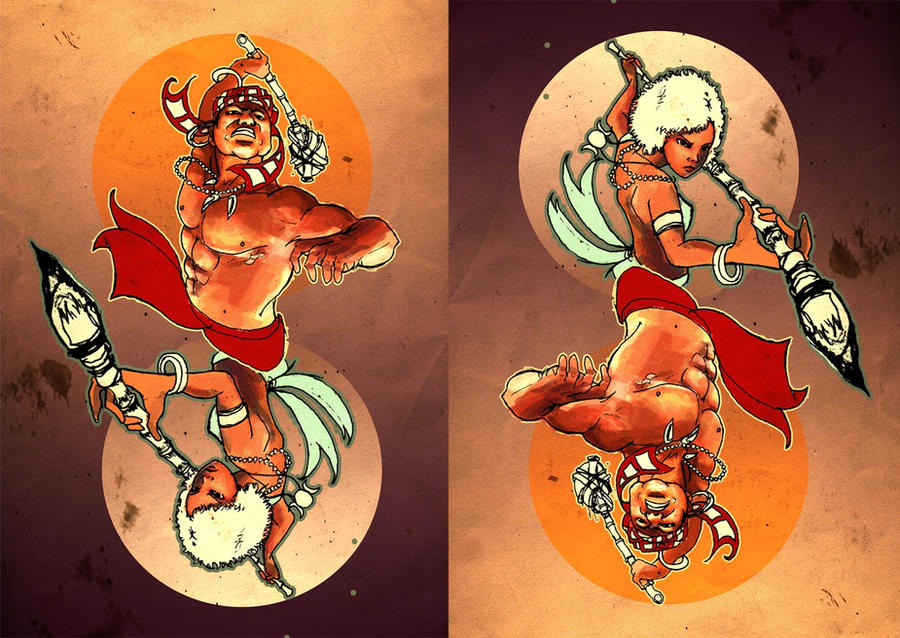Physical cosmology is the branch of physics and astrophysics that deals with the study of the physical origins and evolution of the Universe. It also includes the study of the nature of the Universe on a large scale. A religious cosmology (also mythological cosmology) is a way of explaining the origin, the history and the evolution of the cosmos or universe based on the religious mythology of a specific tradition. Religious cosmologies usually include an act or process of creation by a creator deity or a larger pantheon.
“Cosmology is as old as humankind. Once primitive social groups developed language, it was a short step to making their first attempts to understand the world around them. Very early cosmology, from Neolithic times of 20,000 to 100,000 years ago, was extremely local. The Universe was what you immediately interacted with. Cosmological things were weather, earthquakes, sharp changes in your environment, etc. Things outside your daily experience appeared supernatural, and so we call this the time of Magic Cosmology.
Early people projected their own inner thoughts and feelings into an outer animistic world, a world where everything was alive. Through prayers, sacrifices and gifts to the spirits, human beings gained control of the phenomena of their world. This is an anthropomorphic (magic) worldview, of the living earth, water, wind and fire, into which men and women projected their own emotions and motives as the guiding forces, the kind of world one finds in fantasy and fairy tales.
Later in history, 5,000 to 20,000 years ago, humankind begins to organize themselves and develop what we now call culture. A greater sense of permanence in your daily existences leads to the development of myths, particularly creation myths to explain the origin of the Universe.
Most myths maintain supernatural themes, with gods, divine and semi-divine figures, but there was usually an internal logical consistence to the narrative. Myths are often attempts at a rational explanation of the everyday world, their goal is to teach. Even if we consider some of the stories to be ridiculous, they were, in some sense, our first scientific theories. They also closely follow a particular religion, and this time is characterized by a close marriage of science and religion. We call this the time of Mythical Cosmology.”
In the ancient Philippines, most ethnolinguistic groups had their own versions of creation. As early animist beliefs developed into more complex polytheistic religions, many of the deities appearing in creation myths began to take on personalities of their own. The brief rivalry between Bathala’s children, Apolaki (Sun) and Mayari (moon), is no exception.

Why the Sun is Brighter Than the Moon
BATHALA, the creator of the world, had a son named Apolaki and a daughter named Mayari. The light that shone upon the world and enabled the people, the beasts, the birds, and the fish to see came from the bright eyes of Apolaki and Mayari, So all the creatures loved them dearly.
Bathala himself was very fond of his children, and he watched over them as they wandered across the meadows of heaven. Since the eyes of Apolaki and Mayari shone continuously, it was always day on the earth.
In time Bathala grew feeble with age and died. Then Apolaki and Mayari had a quarrel, for each wanted to rule the world alone. “I am the man and I will succeed my father to the throne,” said Apolaki. “I am going to rule the world, whether you like it or not.”
Mayari’s eyes flashed with anger and she said, “I am no less my father’s child than you. I will succeed him to his throne, whether you like it or not!”
The quarrel grew from bad to worse, and finally words could not express their furious rage. So they picked up wooden clubs and fell upon each other with fierce blows. Back and forth they fought until at last Apolaki struck Mayari in the face and she became blind in one eye.
When he saw his sister stricken, Apolaki took pity on her and said, “Let us fight no more, my sister. Let us share our father’s kingdom equally between us. Let us reign by turns and be friends.”
Mayari agreed, and from then on, Apolaki, whom we know today as the Sun, has ruled the world half the time. Mayari, whom we now know as the Moon, has taken turns with her brother in ruling the world. When Apolaki is on the throne, the world is flooded with warm light, because the light beams from his two bright eyes. On the other hand, when Mayari is reigning, the world is bathed with cool and gentle light; for she is blind in one eye.

SOURCE:
Philippine Myths, Legends, and Folktales | Maximo Ramos | 1990
Ancient Cosmology – University of Oregon Lectures | http://uoregon.edu
ALSO READ: Stars Through the Eyes of Ancient Filipinos
Jordan Clark is a Canadian born descendant of Scottish immigrants living on the homelands of the Lekwungen speaking peoples. His interest in Philippine myth and folklore began in 2004. Finding it difficult to track down resources on the topic, he founded The Aswang Project in 2006. Shortly after, he embarked on a 5 year journey, along with producing partner Cheryl Anne del Rosario, to make the 2011 feature length documentary THE ASWANG PHENOMENON – an exploration of the aswang myth and its effects on Philippine society. In 2015 he directed “The Creatures of Philippine Mythology” web-series, which features 3 folkloric beings from the Philippines – the TIKBALANG, KAPRE and BAKUNAWA. Episodes are available to watch on YouTube. Jordan recently oversaw the editing for the English language release of Ferdinand Blumentritt’s DICCIONARIO MITOLÓGICO DE FILIPINAS (Dictionary of Philippine Mythology) and is working on two more releases with fellow creators scheduled for release later this year. When his nose isn’t in a book, he spends time with his amazing Filipina wife of 20 years and their smart and wonderful teenaged daughter.


